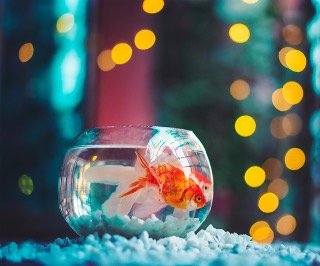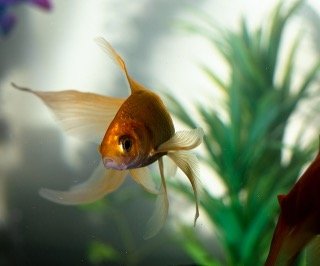
Introduction
The fact that goldfish can grow to enormous sizes may surprise many goldfish keepers. According to records, single-tailed goldfish can grow up to 12 inches long when kept in aquariums! Given that many owners of goldfish anticipate their pets’ growth to be limited to a few inches, and that they will be content to spend their entire lives in a 20-gallon tank,
What goldfish least anticipate is that, within a few months or years, their cute 2-inch common goldfish will grow into a 10-inch goldfish. Another reason why so many goldfish are kept in decent circumstances is that pet shops are not very forthcoming regarding the maximum length that these fish can reach when you purchase them.
What Causes Goldfish To Grow So Big?
The common carp, which may reach a remarkable 30 inches in length in the wild, is the ancestor of all goldfish. This is significant and explains why the carp that are raised in captivity now are colored goldfish that only reach a third of that size.
For many years, goldfish have been inbred in captivity, leading to an ongoing line of variations in color varieties. As a result, goldfish differ physically and genetically from their wild counterparts. Even while goldfish can get rather big, you shouldn’t have to worry about their growing very long in a typical tank.
What Prevents Goldfish from Growing Properly?
There is a misconception that goldfish can intentionally restrict their growth in cramped or overcrowded surroundings. For a number of reasons, this is simply untrue.
To begin with, the biological process of stunting in goldfish is described as a way for the fish to unintentionally hinder their own growth by releasing a material or pheromone into the water column while also preventing the growth of other goldfish in their environment.
You may also like to read Why Don’t Goldfish Live Longer?
Fact vs. Myth
A chemical process that causes goldfish to stunt in response to their environment has not been scientifically confirmed, and there are no records of the substance ever been discovered in a goldfish’s tank or bowl. The myth originated when goldfish caretakers tried to use the fact that the fish wouldn’t grow huge and could thus be kept in a permanently small environment to justify keeping them in smaller aquariums.
There is a reasonable explanation for why so many goldfish owners complain that their fish have stopped growing when housed in smaller aquariums, and it all has to do with the health of your goldfish.
Impure Water
Goldfish’s water quickly becomes contaminated when kept in tiny water bodies as a bowl, vase, or small tank. In contrast, dirty water puts your goldfish’s health at danger and continuously stresses them out. In tiny aquariums, it might be challenging to maintain the water quality unless you perform daily water changes.
Additionally, dirty water provides a breeding ground for different diseases and lowers your goldfish’s resistance to them. Since there are other contaminants present in the water that might harm your goldfish as well as ammonia, nitrite, and nitrate, most of the pollutants in the water column won’t be detected by a typical water parameter test.
How Is a Goldfish Raised?
Typically, goldfish will take care of all of their own growth with very little assistance from their owner. When kept in the appropriate settings with a ration of high-quality food, goldfish will grow steadily.
To make sure that your goldfish are in good enough health to develop and mature normally, you need abide by the following rules:
- Place your goldfish in a sizable, rectangular aquarium that is filled with water about an inch or two below the rim. This gives your goldfish plenty of room to swim.
- Employ a powerful filter that generates a weak current. The current will enable your goldfish to gently exert its muscles to swim in order to stimulate muscular development, while the filter will aid to reduce the amount of waste in the tank.
- Perform weekly water changes to get rid of contaminants that get into the water. Smoke, aerosols, dust, and other air pollutants can all fall under this category.
- Provide a diet high in protein and fiber for your goldfish. Make sure your goldfish has access to commercial flakes or pellets, live or freeze-dried protein sources, and a varied diet.
- Keep the number of goldfish in an aquarium to a reasonable level and avoid overcrowding. As a result, you will be able to maintain better control over the water quality and feeding process than you would if you kept many goldfish together in one tank.
Conclusion
It’s exciting and satisfying to watch your goldfish develop into adults. Everybody wants to see their goldfish live out their full lifespans. Your goldfish’s living conditions should be upgraded in accordance with how quickly they are growing.





